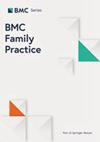European expert consensus recommendations on the primary care use of direct oral anticoagulants in patients with venous thromboembolism
IF 3.2
3区 医学
Q1 MEDICINE, GENERAL & INTERNAL
引用次数: 0
Abstract
Direct oral anticoagulants for the treatment of venous thromboembolism are supported by robust clinical trial evidence. Despite published guidance, general practitioners are faced with increasingly complex decisions and implementation remains sub-optimal in certain real-world scenarios. A two stage formal consensus exercise was performed to formulate consensus statements and a summary guide, facilitating optimal management of direct oral anticoagulants in venous thromboembolism patients by generalist physicians across Europe. An online questionnaire distributed to a broad panel (Phase 1), followed by a virtual panel discussion by an expert group (Phase 2) were conducted. Phase 1 statements covered nine management domains, and were developed via a literature review and expert steering committee. Participants rated statements by their level of agreement. Phase 1 responses were collated and analysed prior to discussion and iterative refinement in Phase 2. In total 56 participants from across Europe responded to Phase 1. The majority had experience working as general practitioners. Consensus indicated that direct oral anticoagulants are the treatment of choice for managing patients with venous thromboembolism, at initiation and for extended treatment, with a review at three to six months to re-assess treatment effect and risk profile. Direct oral anticoagulant choice should be based on individual patient factors and include shared treatment choice between clinicians and patients; the only sub-group of patients requiring specific guidance are those with cancer. Results demonstrate an appreciation of best practices, but highlight challenges in clinical practice. The patient pathway and consensus recommendations provided, aim to highlight key considerations for general practice decision making, and aid optimal venous thromboembolism treatment.欧洲专家就静脉血栓栓塞症患者使用直接口服抗凝剂的初级保健共识建议
用于治疗静脉血栓栓塞的直接口服抗凝剂有可靠的临床试验证据支持。尽管已发布了指南,但全科医生仍面临着日益复杂的决策,在某些实际情况下,实施效果仍未达到最佳。为了制定共识声明和摘要指南,促进欧洲全科医生对静脉血栓栓塞患者直接口服抗凝剂的最佳管理,我们开展了两阶段的正式共识活动。向广泛的专家小组发放了在线调查问卷(第 1 阶段),随后由专家小组进行了虚拟小组讨论(第 2 阶段)。第 1 阶段的陈述涵盖九个管理领域,是通过文献综述和专家指导委员会制定的。参与者根据其同意程度对陈述进行评分。在第 2 阶段进行讨论和反复完善之前,对第 1 阶段的答复进行了整理和分析。共有 56 名来自欧洲各地的参与者对第 1 阶段做出了回应。大多数人都有全科医生的工作经验。共识表明,直接口服抗凝剂是治疗静脉血栓栓塞症患者的首选疗法,在开始治疗和延长治疗时间时都应使用,并在三至六个月后进行复查,以重新评估治疗效果和风险状况。直接口服抗凝剂的选择应基于患者的个体因素,并包括临床医生和患者之间的共同治疗选择;唯一需要特定指导的患者亚群是癌症患者。研究结果表明了对最佳实践的理解,但也凸显了临床实践中的挑战。所提供的患者路径和共识建议旨在强调全科决策的关键考虑因素,并帮助优化静脉血栓栓塞治疗。
本文章由计算机程序翻译,如有差异,请以英文原文为准。
求助全文
约1分钟内获得全文
求助全文
来源期刊

BMC Family Practice
医学-医学:内科
CiteScore
3.20
自引率
0.00%
发文量
0
审稿时长
4-8 weeks
期刊介绍:
BMC Family Practice is an open access, peer-reviewed journal that considers articles on all aspects of primary health care research. The journal has a special focus on clinical decision making and management, continuing professional education, service utilization, needs and demand, and the organization and delivery of primary care and care in the community.
 求助内容:
求助内容: 应助结果提醒方式:
应助结果提醒方式:


